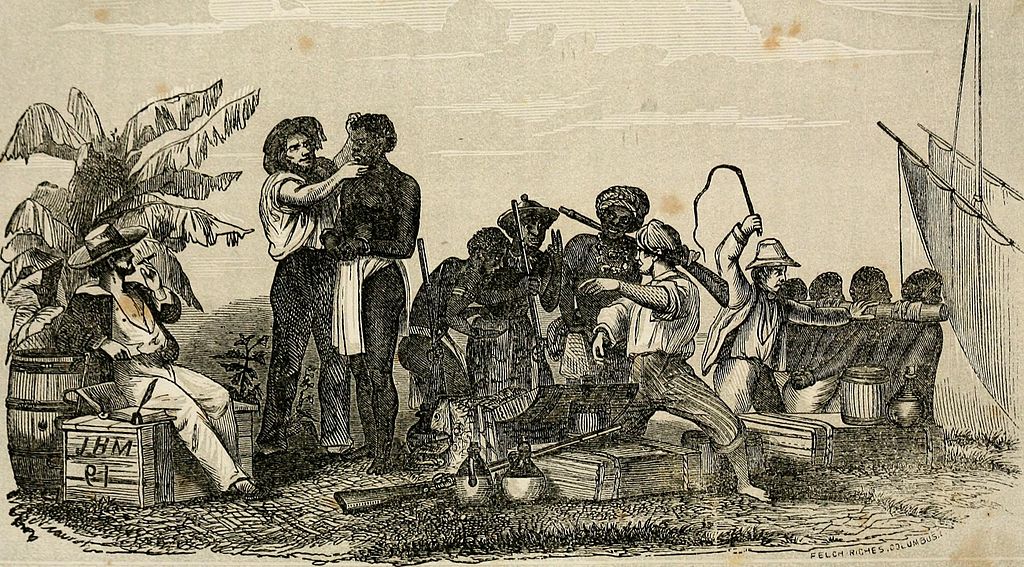Is The Resurrection Account A Late Legend?
So far we have examined a few different theories regarding the Resurrection of Jesus Christ; we looked at the possibility that he didn’t die on the cross, the notion that the apostles plotted in a conspiracy, and the idea that Jesus’ followers could have experienced hallucinations. In this final article on the alternate theories of the Resurrection, we will look at the possibility of the Resurrection developing as a late legend.
Did the early church fathers construct the idea that Jesus rose from the dead hundreds of years down the line? Did they take a political troublemaker who was put to death and turn him into the God Man? Did his simple feats of medical prowess turn into the stuff of legend? Or are the Gospel accounts accurate and trustworthy in what they record?
Why Does It Matter When The Resurrection Account Was Added?
We’ve all heard the family legends passed down from generation to generation. In the US, we all seem to have an “Indian princess” in our family. I have such an ancestor in my family tree. I have photos of her and she certainly looks Native American. But, I don’t have any documents saying that she was – let alone that she was a princess.
If you’re of European descent, you somehow end up related to Charlamagne. Most of this is based on the legend that Charlamagne was overly promiscuous. But, all of this is legend until you find sources close to the time of the living person. You may have heard it told from your great grandpa that his uncle told him their parent’s came from Germany. Charlamagne ruled in the area of modern day Germany. But, you can’t assume that because your family comes from the Frankish territories, and that Charlamagne liked to sleep around, that you are related to him somehow. You have to follow some sort of paper trail. The longer your family is there, and the closer they are in region to Charlamagne, the better your odds. But, it still doesn’t prove anything. Now, if you identify an ancestor, and find that ancestor in some letters of a person who witnessed your ancestor in a relationship with Charlamagne, then that’s evidence.
So, what does family tree research have to do with the Resurrection? Just like in genealogy, we can use the dating of correspondence, and the contents of the letters, to show the accuracy of certain stories. A lot of events surrounding Jesus’ life – healing the sick, casting out demons, raising the dead – sound a lot like the same kind of stories we hear in other mythologies.
A theory that has become popularized in the past few decades is the idea that the Resurrection accounts were added much later in history. The idea got a lot of attention recently with the release of The DaVinci Code by Dan Brown. People who believe in this theory often times mention the Council of Laodicea as their basis. This council convened in 363 A.D and sought to – among other things – come to an agreement on the official canon of Scripture. By this time, there were lots of different accounts, letters and books being circulated that talked about the teachings of Jesus, and the Council sought to come to a consensus on what books to teach from.
The late legend theory arises, however, because some see this as the point at which the story is coming together for the first time. And, if this was the first time anyone decided to write down the teachings of Jesus, how could they possibly get it right 300 years later? By then, people could have added things to the story. Legends could have developed. It’s easy to see how Jesus could have gone from a wise man who was executed for political dissent to a supernatural hero.
Following The Chain Of Custody
When detectives present evidence in a trial, one of the things they have to do is establish a chain of custody. This is done to show that the evidence hasn’t been tampered with over time. If they have a bloody knife in the courtroom, it doesn’t do much good if a detective says “we found this bloody knife in the house next to the body” and has nothing else to back up his claim. Maybe the knife was laying next to the body, but didn’t have any blood on it. Maybe the knife was in the house, but was found in a drawer where it should have been. Or maybe the knife was never there at all. If all we had was the word of the detective, we would have to go based on his character.
But, cops don’t work like that. For this specific reason, they meticulously catalog every piece of evidence found at a crime scene with photos and written reports. Once the evidence is collected and entered into storage at the station, a record is kept every time the evidence is checked out, and it’s condition logged when it is returned. This is to show if it’s condition changed or not over time. So, if the detective says during the trial that they found a bloody knife next to the body, and there is a picture of the bloody knife next to the body, and all of the logs between then and the trial continue to say “this is a knife we found next to the body and it has blood on it” then we can trust that this piece of evidence hasn’t been tampered with since it was first documented.
Does such a chain of custody exist regarding the Resurrection? Thankfully, it does. We don’t have an evidence log book to follow for the Resurrection. But, we do have eyewitnesses who were there, and a chain of disciples that lead out from the eyewitnesses for several generations that maintain the same teachings as the initial accounts.
First, let’s examine the eyewitness testimony to see if it was recorded close enough to the events to be reliable and not full of legends. The Gospels do us no good if the first time they were written down was 300 years later. But, if they were recorded soon afterwards, we can trust them to be more accurate.
The easiest place to start when establishing a timeline is with Acts. Acts was written by Luke, and details the events of the apostles spreading the Gospel and starting the church. Acts is typically dated based on 4 events in history; the death of Paul, the death of Peter, the death of James, and the destruction of the temple in Jerusalem. The book of Acts ends with Paul still in prison in Rome. History puts the death of Peter and Paul somewhere between 64-67 AD. James, the brother of Jesus was martyred in 62 A.D. Rome destroyed the Jewish temple in 70 A.D. None of these events are documented in Acts.
Most critical scholars agree that Luke was a very meticulous historian. He mentions the death of Stephen and James, the brother of John – two lesser apostles compared to Peter, Paul and James, the brother of Jesus. Luke also spent an awful lot of time chronicling the life of Paul and his movements. It’s unlikely he would have left out his death had it happened yet. James, the brother of Jesus was listed as the head of the church in Jerusalem. Certainly Luke wouldn’t have left his death out had it occurred yet. So we take all these things to mean that the book of Acts was written before 62 AD.
Acts wasn’t Luke’s first book, it was his second. He even tells us so in the opening of Acts
In the first book, O Theophilus, I have dealt with all that Jesus began to do and teach,
The first book he is referring to is the Gospel of Luke. But, how do we know Luke didn’t write them both at the same time? Can we date the Gospel of Luke any earlier than 62 AD? Yes, we can. To do so, let’s switch our focus to Paul and his first letter to the Corinthians. He wrote this letter from Ephesus somewhere between 53 and 57 AD. He had founded the church in Corinth somewhere around 51 AD, and wrote to them to address some moral corruption that had taken root there after he left.
In his letter, he reminds them more than once what he taught them the first time he was there. Take this passage regarding the Lord’s Supper from 1 Corinthians 11:23-25
23 For I received from the Lord what I also delivered to you, that the Lord Jesus on the night when he was betrayed took bread, 24 and when he had given thanks, he broke it, and said, “This is my body, which is for[a] you. Do this in remembrance of me.”[b] 25 In the same way also he took the cup, after supper, saying, “This cup is the new covenant in my blood. Do this, as often as you drink it, in remembrance of me.” (ESV)
This passage is key to dating Luke because the only gospel that uses the phrase “do this in remembrance of me” is Luke’s. So, since Paul delivered to the Corinthians this message before, that means he told it to them when he was there in 51. Which means the Gospel of Luke had to have been written by then.
1 Corinthians holds another important passage telling us how soon the followers of Jesus started proclaiming he was resurrected. In 1 Corinthians 15:3-4, Paul reminds the Corinthians that the last time he was there, he taught them what he had been taught – that Jesus died, was buried and was brought back to life. So, he we are, about 15 or so years after Jesus had been executed, and his followers were already proclaiming that he was raised from the dead.
This short time window is important because 15 years isn’t enough of a gap for legends to start being added. Lots of people were still alive from when the events of Jesus’ execution took place. People could have come forward and easily refuted it, but we have no evidence that anyone ever did. If someone said John F. Kennedy came back from the dead, and took part in the Watergate scandal in order to ruin Richard Nixon, we could quickly put that claim to rest by showing that John F. Kennedy’s body is still in its grave. Despite the apostles making these claims, nobody ever went to Jesus’ tomb and produced a body. Because it wasn’t there.
OK, so we’ve shown that the New Testament authors wrote about the Resurrection early. But was it preserved over time? Or was it altered later? We don’t have photographers, detectives, CSI specialists and lawyers, but what we do have are a chain of students that reach from the writers of the New Testament out for about 250 years, and they continued to teach what they had been taught.
First, let’s examine the chain from the apostle John. 3 of his most important students were Papias, Ignatius and Polycarp. We have 7 letters from Ignatius and 1 from Polycarp. They line up with what they learned from John regarding the resurrection.
Next in line is Irenaeus, who was a student of Polycarp and Ignatius. One key element that Irenaeus adds to the chain of custody is a list of the 24 books he was using as Scripture. After Irenaeus comes Hippolytus.
There are two other lines we can follow as well. From Paul, we have Clement and Linus, who became bishops in Rome. We also have a line from Peter and Mark. They established five bishops in North Africa and Alexandria. If you want to know what Paul or Peter or Mark taught, you ask their students. Which we can do by looking at their writings, and seeing they claim the same things Paul, Peter and Mark did. That Jesus rose from the dead and appeared to his followers, proving that he was who he said he was.
Now, this isn’t to say that the early church was united in all aspects. One of the earliest matters the fathers had problems defining was the exact nature of Christ, and how to think of the relationship between Father, Son and Holy Spirit. But they were all in agreement on the Resurrection – Jesus died, his tomb was found empty, he was raised from the dead and appeared to his apostles shortly afterwards.
With their letters and writings, we have early attestation that the people who knew Jesus believed in the Resurrection. This what Christians have believed since the beginning. It wasn’t added hundreds of years later.
Share This Story, Choose Your Platform!
latest video
news via inbox
Nulla turp dis cursus. Integer liberos euismod pretium faucibua







